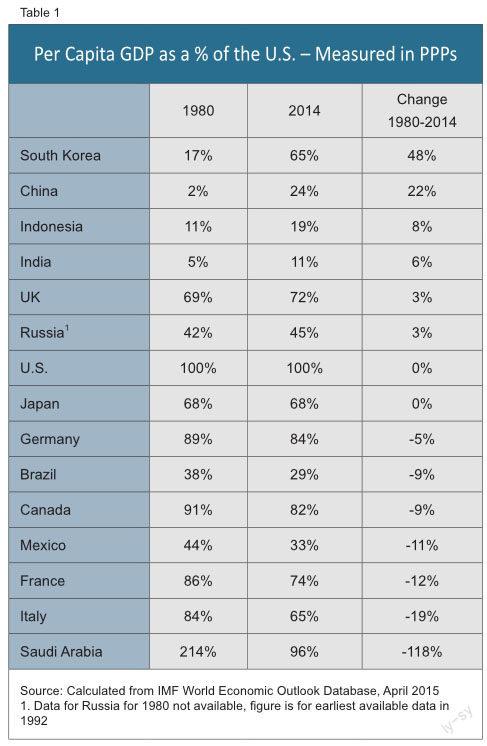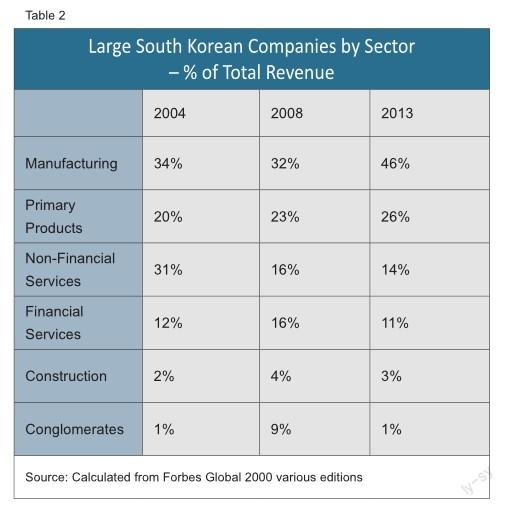“Made in China 2025”–A Key Step in China’s Development
By JOHN ROSS
MADE in China 2025,” the program launched by Chinas government to consolidate the country as a global high technology manufacturing economy, is the strategic key to Chinas development. Analysing why also clarifies key overall challenges facing Chinas economy.
Specific aims of “Made in China 2025” are emphasis on innovation-driven high-quality manufacturing and raising the domestically produced content of key manufacturing components to 70 percent by 2025. The program highlights 10 key manufacturing sectors for radical upgrading, including information technology, machine tools & robotics, aerospace, railways, power equipment, biotechnology and high-end medical products. But most crucial of all is that creating advanced manufacturing industry is the key to Chinas development.
The most fundamental development issue facing China is simple. China is now either the worlds second largest economy, as measured at current dollar exchange rates, or the worlds largest economy – as measured by Parity Purchasing Powers (PPPs). But Chinas per capita GDP still lags far behind developed economies – above all the U.S., the worlds most advanced economy. As shown in Table 1, Chinas per capita GDP in 2014 was only 24 percent that of the U.S. – in this Table PPP measures are used as over time market exchange rates tend to move towards PPP ones and therefore the latter are more suitable for measuring long-term trends.
As living standards are approximately proportional to per capita GDP, and the latter also reflects productivity, the key task for China to ensure its prosperity is to reduce the gap in per capita GDP between itself and the most advanced economies. Clearly the scale of the current gap means this cannot be achieved in a short period. Therefore the key is adoption of a development strategy which, over decades, can narrow it.
Analyzing international experience, to see which development strategies have been successful in achieving Chinas key goal, comparisons to very small states, often with highly specialized economies, are not directly rel- evant. Table 1 therefore shows the per capita GDP for the worlds 15 largest economies. The data show which of these countries have successfully narrowed the gap in per capita GDP with the U.S., and which have fallen further behind.
The first striking feature is that all major advanced economies, with the marginal exception of the UK, have fallen further behind the U.S. since 1980 – a more de-tailed table would show that since 2008 the UK has also fallen behind the U.S. This pattern shows clearly that the strategies being used by the advanced economies have not succeeded in narrowing the gap with the U.S. – they have rather led to them falling further behind.
Turning to developing economies, two countries, Brazil and Mexico, have fallen further behind the U.S. in terms of development level. Three major economies– Indonesia, India and Russia – have achieved some modest success in narrowing the gap with the U.S. – decreasing the gap in per capita GDP respectively by three, six and eight percentage points. But the countries which have achieved truly dramatic success are China and South Korea. China has narrowed the gap with the U.S. by 22 percentage points and South Korea, starting from a higher base than China, has narrowed the gap by 48 percentage points.
South Korea is a particularly relevant comparison as its 1980 development level, 17 percent of the per capital GDP level of the U.S., is not far from Chinas current 24 percent – to be precise, Chinas current level of development compared to the U.S. is equal to South Korea in 1986. As South Koreas current level of development has now achieved 65 percent of that of the U.S., only marginally behind Japan, if China could achieve the same level of success as South Korea during the next three decades its development problems would largely be solved – in absolute terms Chinas economy would also be over twice as large as the U.S.!
To summarize, the truly outstanding successes in development strategy over three decades have been in South Korea and China, while the development strategy in most advanced economies has largely failed.
Turning from the clear data to its explanation, the feature which distinguishes China and South Korea from other economies is clear: both focused on the development of manufacturing industry. China has become the worlds largest industrial producer, overtaking the U.S., while South Koreas key manufacturing companies, such as Samsung and Hyundai, have become key global brands. International data show that large companies on average have higher productivity than small companies, and the degree to which South Koreas large companies are dominated by manufacturing is evident from Table 2. By 2004, 34 percent of the turnover of South Koreas large firms came from manufacturing companies and by 2013 this rose to 46 percent.
It is also striking that the two advanced economies, with the exception of the UK, which have least lost their positions relative to the U.S., are Germany and Japan– both dominated by manufacturing industry. More recently the U.S. itself is the only major advanced economy in which manufacturing output has exceeded its preinternational financial crisis levels.
This data show clearly why “Made in China 2025” is the decisive strategic initiative for China. It also corrects a frequent misunderstanding of global economic development. The data clearly show that the falling share of manufacturing, and rise of services, in most advanced economies has signified economic failure, not success. With the exception of the UK it has been the advanced economies which have most maintained their position in manufacturing – the U.S. itself, Germany and Japan –that have been most successful in terms of their relative economic development. Globally it is the two economies which most concentrated on manufacturing industry –South Korea and China – that have been most successful in terms of relative economic development. The recent shift of India, now a very rapidly growing economy, to emphasize manufacturing with its “Make in India” campaign follows the same logic. It is manufacturing that is key to the most successful economic development. This is the context of “Made in China 2025.”
But while manufacturing will be strategically decisive for China for an entire period, the type of manufacturing which has to be undertaken needs to radically change. Numerous factual studies confirm the prediction of economic theory that industries dependent on low wages, for example various types of textile or toy production, or which are dependent solely on assembly, cannot provide a strategic way forward for China at its present level of development. Studies show that China received only two to four percent of income from iPhone and iPod assembly for Apple while Chinese companies are, for example, moving shoe production into lower wage countries such as Ethiopia. Furthermore, in a modern economy, advanced manufacturing is increasingly integrated with the Internet and similar sectors – which is why China has simultaneously launched its “Internet Plus” program.
But global trends show clearly that increasingly advanced manufacturing will be the key to the overall success of Chinas economic development. This is why “Made in China 2025” is so crucial.

